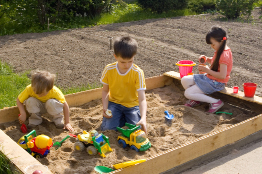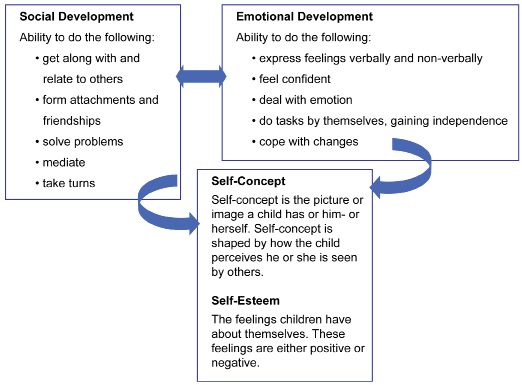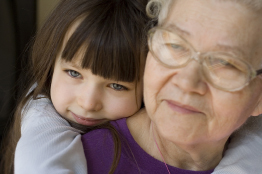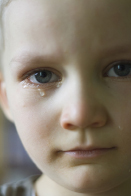Session 1
| Site: | MoodleHUB.ca 🍁 |
| Course: | Early Learning and Child Care 30 Modules |
| Book: | Session 1 |
| Printed by: | Guest user |
| Date: | Thursday, 18 December 2025, 10:34 AM |
Description
Created by IMSreader
1. Session 1
Session 1: Social-Emotional Development
Introduction


© Marzanna Syncerz/945963/Fotolia
Social-emotional development is one component of the SPICE of Life. The other developmental areas are physical, intellectual, creative, and language development. Remember that all developmental areas are closely related, which means development in one domain influences, and is influenced by, development in other areas.
What do children tell us about their development when they exhibit the following characteristics?
-
They don’t seem to know how to play with each other.
-
They express anger by hurting another child.
-
They insist on doing something by themselves.
-
They are fearful of new experiences.
These examples all provide clues about children’s social-emotional needs, abilities, and self-esteem. In order to respond appropriately, child care providers need to understand how children develop socially and emotionally.
In this session you will focus on the importance of meeting children’s social and emotional needs. You will start by examining situations in your own life when trust, independence, and initiative were nurtured. Then you’ll explore ways to promote and support trust, independence, and initiative in young children. At the same time, you will learn appropriate ways to encourage and support the development of positive self-esteem.
1.1. Get Focused
Session 1: Social-Emotional Development
Getting Focused Activity: Reflecting on My Social-Emotional Development
Focus
Are you a trusting person? When you needed comfort, was it given? Were you praised for your efforts?
By reflecting on their personal experiences, child care providers can learn how their experiences have affected their own emotional and social development and their feelings of self-worth. Realizing how they feel about themselves can positively affect how child care providers interact with children and adults. In this activity, you will have the opportunity to consider how your experiences are shaping who you are and who you are becoming.
Directions
Complete Getting Focused Activity: Reflecting on My Social-Emotional Development. As you complete the activity, you may wish to share your thoughts and memories with a peer from your class or with a friend or family member.
Important: Not in the mood to respond on paper? Talk to your teacher about recording your responses in another way, such as in an audio recording or video.
Important: You are not expected to share information about your life that you do not wish to share.
 Checking In
Checking In
Save the Getting Focused Activity in your course folder.
1.2. Inquiry 1
Session 1: Social-Emotional Development
Inquiry 1: Social-Emotional Development
To gain an overview of children’s social-emotional development between the ages of birth to six years, watch the video “Social-Emotional Development.”
 Course Project
Course Project
This is your first reminder to start thinking about your Course Project. As you progress through this session, you should be working on items and strategies to include in your strategies box. How can you apply the information from the video about social-emotional development to items and strategies for your box?
What Is Social-Emotional Development?

© Monkey Business/8521382/Fotolia
Children learn to share as they develop socially.
Emotional development refers to the growth of children’s inner emotional needs, capabilities, and feelings. The following processes are part of emotional development:
- gaining self-awareness and the ability to express feelings verbally and non-verbally (e.g., “I don’t like it when Becky sits in my chair.”)
- learning about themselves and their self-confidence (e.g., “I’m a good soccer player.”)
- becoming independent (e.g., “Me do it!”)
- learning to deal with and understand emotions (e.g., “Johnny is sad because I took his toy.”)
- developing trust in oneself and in others (e.g., After falling, Samantha runs to her child care provider for a cuddle and says, “You kiss it better.”)
- coping with changes (e.g., Johnny cries when his mother picks him up early from the day home because he will miss his snack.)
Social development refers to children’s needs and abilities as they relate to others. As children develop socially, they learn to do the following:
- form attachments (e.g., Nine-month-old Tooki cries when his mother leaves the room and clings to her when she comes back.)
- solve problems (e.g., A five-year-old child says, “I didn’t mean to knock down your tower. Can I help you build it back up?”)
- play alongside or with others (e.g., As four-year-old Hanna plays with her doll, she looks up at the other children every once in awhile; three-year-old Stephan comes over to Hanna and says, “I’ll pretend to be the daddy.”)
- co-operate and take turns (e.g., “How about first you have a turn and then it’s my turn?”)
- make friends (e.g., “Josh, do you want to play with me?”)
Sometimes it is difficult to distinguish between a child’s social development and a child’s emotional development because each affects the other so strongly.
How Is Social-Emotional Development Related to Self-Esteem?
Self-esteem is how a person feels about herself or himself. A child’s self-esteem, or self-concept, involves the child’s feelings of self-worth. These feelings arise from the child’s feelings of personal, social, and emotional competency.
A child needs to have healthy social and emotional development to have high self-esteem. When a child is unable to express his or her feelings appropriately, the child can easily become frustrated and can have trouble making friends. For example, an older child may display poor self-esteem by taking toys from other children or biting others.
The following diagram summarizes how children’s social and emotional development are related to self-concept and self-esteem.

Important: To further develop your ideas and ensure you understand the links between social development, emotional development, self-concept, and self-esteem, discuss the diagram with a peer in your class or with a colleague in the child care facility. In your discussion, focus on your understanding of how children’s self-esteem and self-concept are connected and how social and emotional development are interrelated and influence self-esteem and self-concept.
Stages of Social-Emotional Development

© Marzanna Syncerz/473919/Fotolia
The stages of children’s emotional and social development have been studied by many psychologists and early childhood scholars. All agree that the experiences a child has in the early years have lasting effects on the way the child feels about himself or herself and other people.
Erik Erikson’s Theory of Social-Emotional Development helps us understand the stages a child will go through in this process.
 Course Project
Course Project
How can you apply the information from the video you watched at the start of Inquiry 1 and what you’ve learned about Erik Erikson’s theory to items and strategies for your strategies box?
1.3. Page 2
Session 1: Social-Emotional Development
Checking My Understanding: Supporting Social-Emotional Development in the Child Care Facility
Focus
Child care providers play an essential role in providing an environment that is both physically and emotionally safe for children. When child care providers understand how children develop socially and emotionally, they can create successful play experiences and interactions that support children’s self-esteem.
Directions
Important: Some situations may have more than one matching practice.
Complete this “21-Recommendation Check.” Read the 21 recommended practices listed in the activity. For each situation, indicate which practices the child care provider is performing.
Developmental Achievements from Birth to Five Years
It’s important to remember that each child is unique and develops at his or her own rate. As you review the stages of social and emotional development, consider what the implications are for child care providers. For example, if a baby begins to fear strangers at about six months of age, how can this information be used at the child care centre?
The tables Social Development and Emotional Development provide details on what a child can typically do and skills that are typcially emerging at each stage of development.
Temperament and Self-Esteem

© Marzanna Syncerz/451284/Fotolia
Children have individual characteristics or temperaments. The following examples provide a few ranges:
- Some children adjust quickly to new situations; others need much more time to adjust.
- Some children tend to be very active most of the time, while others are quite inactive.
- Some children get easily distracted; others seem to concentrate for a long time on one activity.
Most researchers agree that some traits, such as those listed above, are at least in part influenced by genetics. While responsive child care providers can help children adapt, they cannot change children’s basic temperaments.
To help children develop positive self-esteem, it is important that child care providers encourage children’s growth and that they accept children for who they are. For example, never suggest or imply that shyness is not a good characteristic or temperament; rather, encourage a child who is shy by noting when the child is being social and by giving the child strategies for becoming less shy.
Course Completion Checklist
Have you remembered to update your Course Completion Checklist? If you haven’t already started to use the Checklist, access it in the Toolkit now. Remember to update the Checklist every time you work on the course.
 Course Project
Course Project
Don’t forget to apply what you have learned to working on your Course Project.
1.4. Learning Activity 1
Session 1: Social-Emotional Development
Learning Activity 1: Promoting Positive Self-Esteem
Focus
Child care providers sometimes fail, unintentionally, to encourage children to be independent, take initiative, and be proud of themselves. Thinking carefully about how child care providers react to children will support your learning about how to respond to children in ways that promote positive self-esteem.
Directions
Step 1: Read Billy and Maria.
Step 2: Complete Part 1 of Learning Activity 1: Promoting Positive Self-Esteem.
Step 3: Read Scenario 1 and Scenario 2.
Step 4: Choose one of the two scenarios. If you choose Scenario 1, complete Part 2 of Learning Activity 1: Promoting Positive Self-Esteem. If you choose Scenario 2, complete Part 3 of Learning Activity 1: Promoting Positive Self-Esteem.
Step 5: Review Student Rubric for Learning Activity 1: Promoting Positive Self-Esteem. Assess the quality of your responses and make any necessary adjustments.
Important: Not in the mood to respond on paper? Talk to your teacher about recording your responses in another way, such as in an audio recording or video.
 Checking In
Checking In
Save Learning Activity1: Promoting Positive Self-Esteem and your self-assessment in your course folder.
Course Completion Checklist
Have you remembered to update your Course Completion Checklist? If you haven’t already started to use the Checklist, access it in the Toolkit now. Remember to update the Checklist every time you work on the course.
1.5. Inquiry 2
Session 1: Social-Emotional Development
Inquiry 2: Understanding Children’s Needs for Healthy
Social-Emotional Development

© Monkey Business/8653785/Fotolia
By playing with the children, this child care provider is establishing positive relationships with them.
One of the first steps in developing a child’s self-esteem is to establish a good relationship with the child. Relationships that are mutually loving, caring, honest, and supportive create an atmosphere for healthy human growth. Respect for the child is the basis of a healthy relationship with the child.
In the following chart, the Canadian Child Care Federation lists behaviours that are respectful and disrespectful to children.
Respectful behaviour includes the following actions:
- listening to what the child wants to say
- taking time for the child even when busy
- playing with the child
- recognizing the child’s accomplishments
- showing interest in the child’s projects
- making eye contact
- letting the child have privacy
- considering each child a unique individual
- calling the child by her or his name
- encouraging independence
- trying not to interrupt the child (allow time for transitions)
- allowing the child to make mistakes
- giving the child a chance to communicate
Disrespectful behaviour includes the following actions:
- not taking the child’s opinion seriously
- avoiding an issue that the child feels is important
- walking away from a child who is crying
- not stopping to listen
- talking in a baby talk tone of voice
- using angry words
- interrupting the child when he or she is speaking
- not letting the child finish tasks
- using sarcasm or shouting
- focusing on the child’s “bad” behaviour
- calling the child names
- setting expectations that are too high
- ignoring the child
For children to gain a positive sense of self, they need to feel accepted, respected, and safe in their environment. It is important that child care providers give children affirmation. Children also need the following:
- an atmosphere of trust
- activities that they can do successfully
- predictable people and environments
- people who understand, appreciate, and celebrate their culture
- opportunities to be independent
- opportunities to make choices
- opportunities for privacy and quiet time
- to feel secure that they will not be ridiculed or judged
Important: To further develop your understanding, partner with a peer in your class or with a colleague in the child care facility. Discuss strategies or ideas for developing strong relationships with children that you have come up with or that you have seen others using.
You might also discuss how you felt as a child when adults interacted with you in respectful or disrespectful ways, or how the environment influenced how you felt. If it is difficult for you to remember your childhood, or if you do not wish to discuss your childhood, you may wish to focus your discussion on children or situations you have observed at the child care facility or elsewhere.
 Course Project
Course Project
How is your strategies box coming along? How could you apply information you gained in your reading and in your discussions to items and strategies for your strategies box? Now would be a good time to work on items and strategies.
1.6. Learning Activity 2
Session 1: Social-Emotional Development
Learning Activity 2: Reconsidering Praise
Focus
Alfie Kohn taught high school before becoming a leading author and lecturer in the areas of education, parenting, and human behaviour. He has written many books and articles. Reading and working with one of Kohn’s articles, you will learn how the ways in which child care providers respond to children impact their social-emotional development.
Directions
Important: While searching the Internet, you might also want to learn more about the author and to read some of the author’s other articles.
Step 1: Do an Internet search for the article “Five Reasons to Stop Saying ‘Good Job!’” by Alfie Kohn. Use the name of the author and the title of the article as your search terms.
Step 2: With a partner, discuss the following questions:
- How are praise and encouragement different?
- What are the characteristics of praise?
- How does Kohn’s article challenge your thinking about praise?
- How might the messages in Kohn’s article impact your future interactions with children?
Step 3: Complete both parts of Learning Activity 2: Responding in a New Way.
 Checking In
Checking In
Save Learning Activity 2 in your course folder.
1.7. Learning Activity 3
Session 1: Social-Emotional Development
Learning Activity 3: Supporting Children’s Social and Emotional Development
Focus
By using praise, child care providers can promote children’s social and emotional development and their self-esteem. In this learning activity, you will have the opportunity to observe, practise, and reflect on the use of praise.
Directions
Step 1: Review Anecdotal Notes. Go to a child care facility. For at least 20 minutes, observe and make anecdotal notes about the social interactions and use of praise between two children or between a child and a child care provider.
Step 2: Immediately following your observations, model the use of praise with one or more children.
Important: Always make sure that you gather information in a way that ensures the information remains confidential. Never leave your notes where children or the family members of children could read them.
Step 3: Prior to leaving the child care facility, complete Learning Activity 3: Supporting Children’s Social and Emotional Development.
Step 4: Review Student Rubric for Learning Activity 3: Supporting Children’s Social and Emotional Development. Assess the quality of your reflection, and make any necessary adjustments.
 Checking In
Checking In
Save your completed learning activity and your self-assessment in your course folder.
1.8. Session 1 Summary
Session 1: Social-Emotional Development
Session Summary
Important: The quiz may contain questions beyond points highlighted in this summary. Be sure to review the session thoroughly.
Review Session 1 to prepare for writing the quiz. As you review, note the sections that connect with the following points:
-
Emotional development refers to the maturation of children’s emotional needs and capabilities. It is the process of gaining self-awareness, confidence, and independence.
-
Social development refers to understandings and abilities related to interactions with others.
-
Self-esteem is the feeling or opinion that children have about themselves.
-
Child care providers can build positive relationships with children by creating environments of trust in which each child feels special and is able to express herself or himself without fear of humiliation.
-
Child care providers should be available to children at all times. They should speak to children in a caring tone of voice and at the eye level of the children.
-
Child care providers should build positive relationships with children’s families to enhance and promote each child’s self-esteem.
-
Child care providers should allow children to express their feelings, and they should model positive interactions with others.
Session Quiz
 Checking In
Checking In
Contact your teacher to decide together when and where you will complete the Session 1 Quiz.
Course Completion Checklist
Have you been keeping your Course Completion Checklist up to date? Remember that the Checklist is available in the Toolkit, though it should now be saved to your computer and be partially complete.